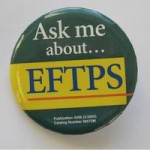I hate bookkeeping! I know, you probably found this site looking under “accountants” but I hate doing bookkeeping. I’ve found that many other small business owners do too. So if you’re like me, you want to keep your bookkeeping time spent to a minimum so you have more time to work on the part of your business that you love. Here are some of my tips to keep things simpler:
Make a separate bank account for your business and keep it apart from your personal money. Income goes into the business account, expenses go out of the business account. If you do this one step, your bank statements become a perfect record of your business.
What if I accidentally make a business purchase with my personal funds? Write yourself an expense report, just as if you were working for a major corporation- attach receipts, and write a check to yourself as an “expense reimbursement.”
What if I need to take money out of my business account to pay for personal stuff? Once again, you write yourself a check, label that as “owner’s draw”. One business owner I know writes checks for his reimbursements and uses account transfers for his draw so that it’s easier for him to keep track of what is what. The important thing to remember is that your draw is not an expense, that’s part of your profit.
Never take cash out of your business account with your atm card. Never.
What if I don’t have enough money to pay my business bills with my business account? Can I pay my business bills with my personal checking account? No. You should write a check from your personal account to your business account and pay the bills from there. Keep track of that. When your business is doing better, you can reimburse yourself.
I get a 1099 at the end of the year and I write less than five checks a month for expenses, if even that. Do I really need a separate bank account? In a case like this, probably not, you could get away with a handwritten log of your expenses. The point is to do what’s easiest for you, in this case separate accounts might be more of a headache.
I’ve got the opposite problem. I’ve got lots of little expenses from all over the place. It takes me hours to load it all into Quickbooks. Any help for me? Maybe, here’s a tip I learned from one of my clients that might work for you. This fellow had lots of expenses, but the vast majority of them fell into two categories: production and shipping. He got two credit cards, the Visa he used exclusively for his production expenses, and the Mastercard for shipping. Any other expenses he put on his debit card or wrote checks for, but they were minimal. Each month, as he paid his credit cards he entered that one expense as his production or shipping expense instead of the dozens of smaller charges that he had been entering. If you’ve got a business where you can group your expenses like that, this might be helpful for you. Make sure you save all your receipts in a file with your credit card statements to back up those entries in case you get audited.
If you’ve found a tip that helps you keep your small business bookkeeping simple, please share it here. Thanks.





![honus_wagner_t206_canadacardworld2[1] Honus Wagner Baseball Card](http://robergtaxsolutions.com/wp-content/uploads/2010/12/honus_wagner_t206_canadacardworld21-150x150.jpg)



